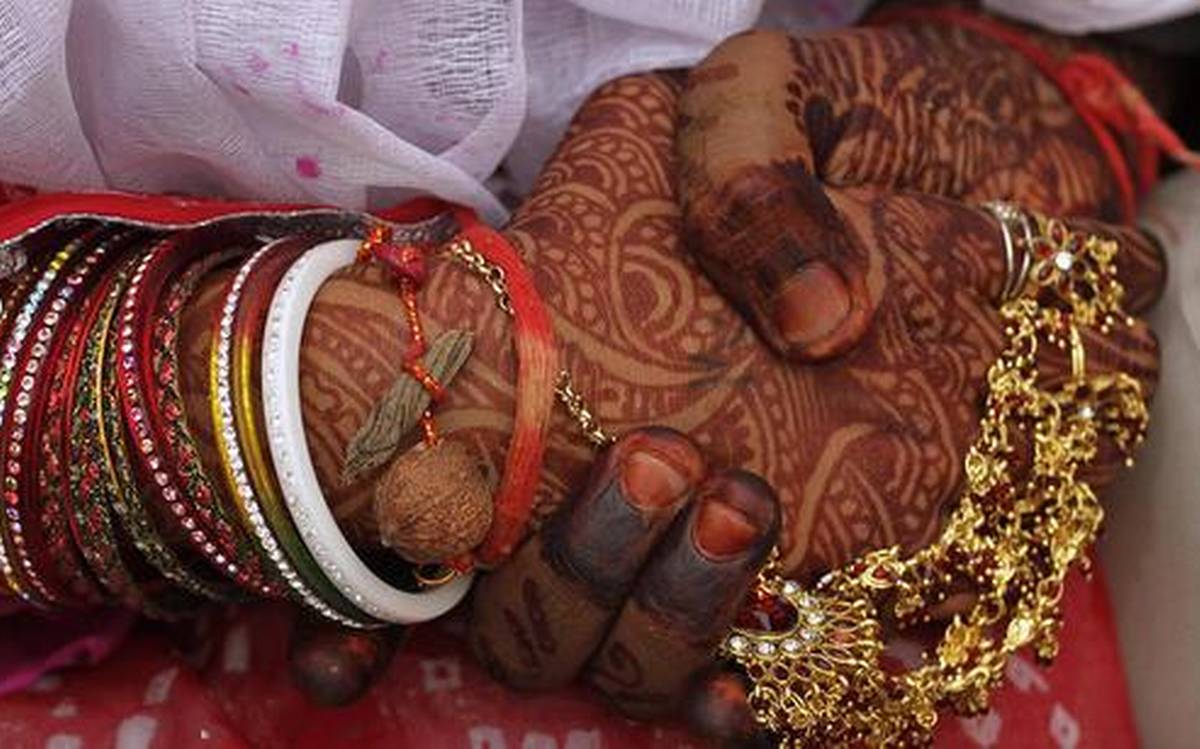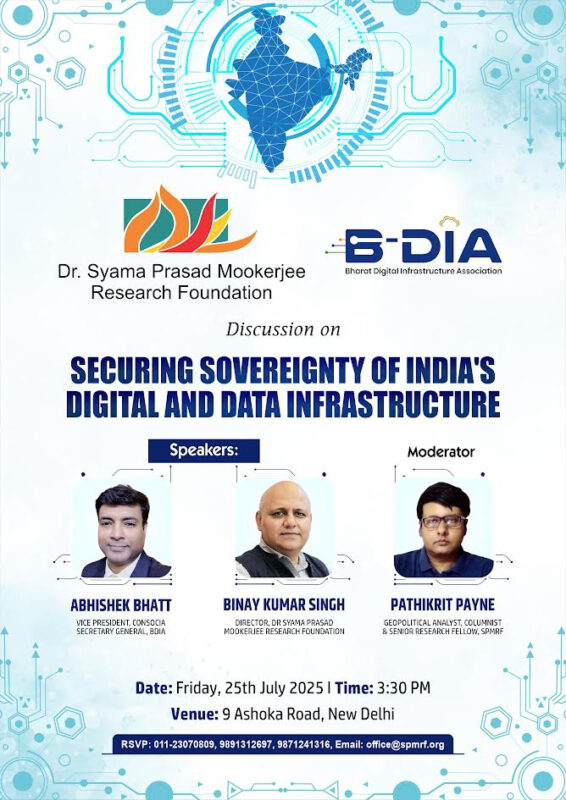Prime Minister Modi, in his I-day speech, hinted at the centre’s mulling over the issue of what shall be an ideal age of marriage, especially for women. It is expected that reviewing the age of marriage for women will not only ensure equal job opportunities for them in employment but also improve the parameters of health and nutrition. Prime Minister Modi also indicated that the decision on the issue would be taken soon after the committee (set-up to study the issue) submits the report.
Finance Minister Nirmala Sitharaman, in her budget speech of 2020, had announced the constitution of a Task Force to give recommendations on the issues related to women’s age of marriage and age of entering motherhood. Accordingly, in June 2020 the Women and Child Development Ministry set up a Task Force headed by Jaya Jaitley to review the legal age for marriage for women along with the issues of Infant Mortality Rate, Maternal Mortality Rate, Total Fertility Rate, Sex Ratio at Birth, Child Sex Ratio (CSR) and any other issue related to health and nutrition of child and mother. The Task Force is also expected to suggest suitable legislations and amendments in existing laws and to chalk out a detailed roll-out plan with timelines to implement the recommendations.
The British-era Sarda Act (officially called the Child Marriage Restraint Act, 1929) fixed the minimum age of marriage for girls at 14 years and boys at 18 years. It was amended in 1978 to raise the age for women to 18 years, and men to 21. The Sarda Act was repealed in 2006 and replaced by the Prohibition of Child Marriage Act, 2006. The proposed changes are believed to further increase the age of marriage for women to 21 years. From time to time multiple national and international agencies including the non-governmental organisations, National Commission for Women, Law Commission, National Human Rights Commission, the Convention on the Elimination of all Forms of Discrimination Against Women (CEDAW) etc. have recommended revisions in the minimum age of marriage. Though the reasons for revisions sought might differ from agency to agency, there is a broad consensus on the need for such a revision.
Need for Revision
Uniform age of marriage
The Law Commission, in its Report No.205 published in 2008, recommended common marriageable age for both the sexes, i.e. 18 years to avoid any severe consequences to the individual and the society as a whole. The idea behind keeping the age lesser for women was the belief that girls reach puberty earlier as compared to men, and therefore, she becomes mature at an early age as compared to boys. In a consultation paper on reform in family law in 2018, the Law Commission observed that having different legal standards of the age of marriage “contributes to the stereotype that wives must be younger than their husbands”. The commission has also recommended stricter punishment for conducting child marriages. However, given the circumstances and the needs of young Indians, it would be a regressive step to reduce the age of marriage for boys to 18 years. What has been considered as hurdles in women’s development caused by early marriage, i.e. lack of opportunities of higher education and career choices, would apply to men as well if the age of marriage is reduced for men. Therefore, even though the uniform age of marriage for both the sexes is a welcome recommendation, a reduction in the age of marriage for men is undesirable.
Health Concerns
Prime Minister Modi, as well as Finance Minister Sitharaman, in their speeches, talked about the need for revision in the age of marriage for women for better health and nutrition parameters. There are serious health concerns of early marriage when a girl is not fully ready, physically, emotionally and psychologically. Further, the issues get complicated by early forced motherhood caused by social/ family pressure and/or lack of awareness of contraceptive measures. There is a direct correlation between the age of marriage of a girl as well as age of entering motherhood and Maternal Mortality Rate (MMR), Total Fertility Rate (TFR), malnutrition and Morbidity Rates. The early motherhood not only impacts the health of a woman negatively but also have severe social and economic implications. Through research, it is concluded that to improve health and nutritional parameters of women, delaying the age of marriage can play a crucial role.
Gender Equality and Dignified Social Life
The early age of marriage pushes many women to drop out of school and colleges denying them an opportunity of rightful education, employment opportunities and thereby denying them a chance to fulfil their aspirations of being an independent woman. The story of India’s rise in the twenty-first century can be realised only with robust participation and leadership of women in all sectors. Getting married at an early age leads to restrictions on women’s participation in civic life which is not only detrimental to individual woman’s growth and aspirations but also for the rise of the nation.
The disparity in age of marriage is reflected not only in the gender domain, i.e. between men and women but also reflects in the social and economic domain. The National Family Health Survey (NHFS -4) data 2015-16 indicates specific socio-economic trends relating to the age of marriage. The data shows that as compared to the urban women, rural women are likely to marry earlier; women belonging to low-income groups are likely to marry at an early age due to the financial reasons. Amongst the significant determinants of early marriage, one is poverty. The data also establishes the link between the levels of education and age of marriage. It indicates that women with 12 years or more of schooling are most likely to marry later. From this data, one can reasonably conclude that it is mostly women from the marginalised groups who get married at an early age for social, religious or economic reasons and mostly without choice.
Though principally as well as contextually increasing age of marriage for women is a welcome and progressive step, there are several challenges in realising this change on the ground.
Challenges
Various legislations define ‘child’ and hence ‘adult’ differently. Laws relating to Child Marriage, Prohibition of Child Labour, POCSO etc. define ‘child’ differently. Though it is true that the logic of these acts demand differentiated definitions and to have uniform definitions is implausible, at least harmonious construction of laws can be ensured. Similarly, the relationship between age of attaining maturity, age of consent, age of entering adulthood and age of marriage need to be seen holistically. E.g. Decreasing age of attaining puberty and increasing age of marriage lead to many social and cultural challenges and need to be accounted for. Some critics pointed out that women who become sexually active before the legal age of marriage and say any increase in the age of marriage may push more women and their children out of the formal reproductive healthcare framework. Increasing age of marriage for women may also lead to ballooning of numbers of child marriage cases, as the marriage of a girl between 18-21 years will also be considered illegal.
The process of translating social legislation, aiming to bring in progressive social change into a social reality is slow. Even though the latest NFHS data indicates that majority of women in India marry after the age of 21 and the mean age of women at marriage is 22.1 years, and more than 21 in all states, it is essentially in socially and economically underprivileged communities like SCs, STs and Muslim community that child marriages are prevalent. Further, the differentiated provisions in the Personal Laws regarding the void, voidable and valid marriages may obstruct percolation of the benefits of the progressive legislation of this kind. Hence, while implementing the law, special attention needs to be paid to spread awareness among underprivileged communities with the help of civil society organisations, community leaders etc.
For over six years, the Modi Government has made several laws and policies for the welfare of women, laying the path for a dignified life for women. These include the abolition of Triple Talaq, Ujjwala Yojana and Swachh Bharat, Beti Bachao Beti Padhao, maternity leave up to 26 weeks etc. to mention just a few. The proposed increase in the legal age of marriage for women will be a step towards opening up equal opportunities of education and employment, reducing MMR and improving health and nutrition standards of women.
The law itself needs to be backed by civil society organisations to ensure uniform implementation of the proposed changes across the social and economic spectrum. Women will play a crucial role in inscribing the story of the rise of India. The proposed changes will serve as a deterrent, at least in the legal sense, to getting girls married off at an early age under pressure. The civil society organisations will have to play a crucial role in spreading the awareness and taking the benefits of these changes to the grassroots, especially to the women who belong the socially and economically marginalised sections.
(The writer is an Assistant Professor at Maharashtra National Law University, Mumbai, Views expressed are her own.)
Image Source: https://www.thehindu.com
(The views expressed are the author's own and do not necessarily reflect the position of the organisation)


